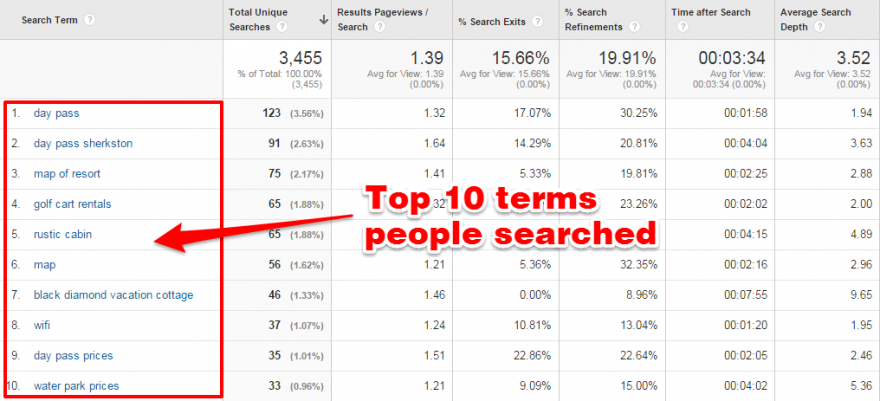With communication channels multiplying — from social media and chatbots to email and video calls — understanding customer engagement becomes more complex and critical.
While many metrics exist to know how engaged your customers are, focusing on key performance indicators (KPIs) that show tangible results simplifies the process and maximizes your impact. For instance, email opens are hardly reliable and no longer signal customer loyalty.
We’ll look into 10 top customer engagement metrics to enhance your support strategies and business growth.
Why Track Customer Engagement
Customer engagement metrics help smoothly navigate the customer journey. They provide a deep understanding of how customers feel about your business overall, from your products and brand to your customer service.
Engaged customers are also satisfied and more likely to become loyal advocates, stick with you longer, and drive revenue growth.
In fact, companies with highly engaged customers see a 23% premium in revenue growth.
Customer satisfaction score, net promoter score, and customer retention rate are some examples of customer engagement metrics businesses typically track and measure.
Tracking key customer engagement metrics helps you:
- Understand customer satisfaction: Go beyond surface-level feedback to better understand customer sentiment and identify areas for improvement.
- Measure your strategies: Evaluate the effectiveness of your onboarding process, retention strategies, and marketing efforts to see if you’re building deeper connections.
- Spot areas for improvement: Pinpoint specific touchpoints or processes that need attention and make targeted, data-driven improvements across departments.
- Create consistent positive experiences: Assess whether your team consistently delivers positive interactions and identify gaps in training or support.
- Optimize the customer journey: Get a complete view of the customer journey and identify opportunities to optimize every interaction, from initial awareness to long-term loyalty.
In a digital-first world, tracking and measuring customer engagement is the only way to really know more about your customers’ needs and preferences and your business performance.

10 Most Important Customer Engagement Metrics To Track
Customer engagement is multifaceted, and measuring its impact requires different types of metrics. Tracking the right engagement metrics helps you better interact with and service customers.
The customer engagement KPIs we’ll discuss fall into these categories:
- Core customer engagement metrics: Customer satisfaction, net promoter score, customer effort score.
- User engagement metrics: Website and app metrics, social media engagement, email engagement.
- Business-specific metrics: Customer churn rate, customer lifetime value (CLTV), customer retention rate (CRR), customer health score.
1. Customer satisfaction score (CSAT)
CSAT is like a quick pulse check on how happy your customers are with your company, product, or service. It’s their chance to tell you what they really think, right after an important interaction like making a purchase or getting help from your support team.
Keeping an eye on your customer satisfaction score, you can see what’s working well and where you might need to make some tweaks. If scores are low, it could be a sign that something needs improvement with your product, service, or support process.
Tracking CSAT over a period of time helps you see if the changes you make make a difference, and it shows your customers that you genuinely care about their experience.

CSAT calculation
CSAT focuses on the percentage of positive responses. While scales can vary, it’s common to consider responses of 4 or 5 on a 5-point scale as indicators of satisfaction.
Here’s the formula:
(Number of responses scoring 4 or 5 / Total number of responses) x 100 = CSAT
For example, if 40 out of 50 survey responses are positive, your CSAT score is 80%.
CSAT benchmark: A CSAT score of 75-85% is considered good. However, the ideal score depends on your industry and specific goals.
2. Net promoter score (NPS)
NPS is all about loyalty and whether your customers like you enough to recommend you to others. Customers give you a score based on how likely they are to spread the good word, which helps you predict how your business can grow.
High NPS scores usually mean happy customers who stick around and attract new ones. It also helps you identify your biggest fans (your “promoters”) who can become valuable advocates for your brand. If your NPS is low, it’s a signal to dig deeper and figure out what’s holding customers back.

Understanding NPS categories
NPS responses are categorized into three groups:
- Promoters (Scores 9-10): Enthusiastic customers, highly likely to recommend your brand.
- Passives (Scores 7-8): Satisfied but not overly enthusiastic.
- Detractors (Scores 0-6): Unhappy and unlikely to recommend your brand.
NPS calculation
NPS is calculated by subtracting the percentage of Detractors from the percentage of Promoters.
(% Promoters – % Detractors = NPS)
For example: If 50% of your survey respondents are Promoters and 10% are Detractors, your NPS is 40.
NPS benchmarks
- Above 0: Considered good, indicating more Promoters than Detractors.
- Above 20: Excellent, showing a strong level of customer advocacy.
- Above 50: World-class, demonstrating exceptional customer loyalty.
3. Customer effort score (CES)
Nobody likes to jump through hoops to get things done, and that includes your customers. CES measures how easy it is for them to interact with your company and solve their problems.
A high CES score means customers are getting frustrated, which could lead them to switch to a competitor. When you make your workflows effortless and convenient, you build stronger relationships and keep customers coming back for more.

Measuring CES
CES is typically measured by asking customers to rate how easy it was to get something done, like resolving an issue or finding information. Lower scores indicate less effort and a smoother experience.
CES benchmark: For a five-point scale, scores of 1 or 2 are considered good. For a seven-point scale, scores of 1 to 3 are considered good.
4. Website and app metrics
Your website and app are like digital storefronts. Website and app metrics give you a behind-the-scenes look at how people interact with your online platforms.
You can see how many people visit your site, what they click on, and how long they stick around. These metrics enable you to understand what’s grabbing their attention and where they might be getting lost or confused.
User engagement metrics for websites
- Traffic: The number of visitors to your website, a basic indicator of your website’s reach and visibility. Higher traffic suggests greater interest in your site or brand.
- Bounce rate: The percentage of visitors who leave your website after viewing only one page. A high bounce rate may indicate issues with your website’s content, design, or user experience, as visitors aren’t finding what they’re looking for.
- Average session duration: The average time users spend on your website per visit. Longer session durations suggest that users are engaged with your content and find it valuable.
- Pages per session: The average number of pageviews in a single session. This metric reflects how deeply users are exploring your website and their level of interest in your content.
- Conversion rate: The percentage of website visitors who complete a desired action, including subscriptions, newsletter sign-ups, referrals, or contact form fill-ups. Measures the effectiveness of your website in achieving its goals.

User engagement metrics for apps:
- Downloads: The number of times your mobile app is downloaded. This provides insight into the initial reach and popularity of your app.
- Daily/monthly active users (DAU/MAU): The number of unique users who interact with your app daily or monthly. Show how many people are actively using your app and its overall user base.
- Stickiness (DAU/MAU): A measure of how frequently users return to your app. Higher stickiness indicates that users find your app valuable and engaging, leading to repeat use.
- In-app actions: Specific actions users take within your app, such as completing a level in a game, making a purchase, or sharing content. Tracking these actions helps you understand user behavior and preferences.
- App crashes: The frequency of app crashes. A high crash rate negatively impacts user experience and can lead to app uninstalls. Monitoring this metric is crucial for maintaining app stability and user satisfaction.
5. Social media engagement
Social media is where people chat, share, and express their opinions, including talking about your brand. Social media engagement shows how much people interact with your content – liking, sharing, and commenting.
Monitoring social media lets you hear what people say about your company, manage your online reputation, spot potential problems, and find your advocates.

Key engagement metrics for social media:
- Brand mentions: Track how often your brand is mentioned online, both directly (@mentions) and indirectly (in general conversations to understand the volume and context of conversations related to your brand.
- Sentiment analysis: Analyze the tone and emotion behind social media mentions to gauge overall brand sentiment. Are people expressing positive, negative, or neutral opinions about your company?
- Reach: Measure the potential audience exposed to your brand mentions and social media content, indicating how far your message is spreading.
- Share of Voice: Compare your brand mentions to those of competitors to understand your brand’s prominence in online conversations.
- Trending topics: Stay informed about trending topics and hashtags related to your industry and brand to identify opportunities to join relevant conversations and engage with your audience.
6. Email engagement metrics
Email is still a powerful way to connect with your customers, but it’s not enough to just hit “send.” Email engagement metrics show you how effective your email campaigns really are.
You can see how many people open your emails, click on your links, and act. This helps you figure out if your emails hit the mark or if they end up in the trash (or worse, the spam folder).

Key metrics to track:
- Open rate: The percentage of recipients who open your email. A low open rate may indicate issues with your subject lines or sender name.
- Click-through rate (CTR): The percentage of recipients who click on a link within your email, showing the efficacy of your email content in driving traffic to your website or landing pages.
- Conversion rate: The percentage of recipients who complete a desired action after clicking on a link in your email, such as making a purchase or filling out a form.
- Bounce rate: The percentage of emails that were not delivered to the recipient’s inbox. Could be due to invalid email addresses or other delivery issues.
- Unsubscribe rate: The percentage of recipients who unsubscribe from your email list. A high unsubscribe rate may signal that your content is not relevant or you’re sending emails too frequently.
- Spam complaints: The number of recipients who mark your email as spam. This is a serious issue that can negatively impact the sender reputation and deliverability.
7. Customer lifetime value (CLV)
CLTV tells you the total revenue you can expect from a single customer throughout their relationship with your business. It’s not just about a single purchase; it’s about the total value they bring throughout their entire relationship with you.
The higher your CLTV, the more valuable your customers are to your bottom line. You get to see how much you should invest in acquiring and keeping customers happy. It’s also a great way to spot your most valuable customer segments and tailor your strategies accordingly.

CLTV calculation
While calculating CLTV can be complex, a simplified formula is:
Average purchase value x Average purchase frequency x Average customer lifespan = CLTV
Let’s say your average customer spends $50 per purchase, makes 4 purchases per year, and remains a customer for 3 years:
$50 x 4 x 3 = $600 CLTV
CLTV benchmark: It’s good to aim for a CLTV at least 3-5 times your customer acquisition cost (CAC).
8. Customer churn rate
Customer churn rate is the unfortunate reality of business — it tells you how many customers leave you over a given period. Keeping churn low is crucial because losing customers means losing potential revenue and profitability.
A high churn rate could be a sign that something’s not right with your product, service, or customer experience. Understanding why customers are leaving allows you to take steps to fix those issues and keep more customers on board.

Churn rate calculation
To calculate your churn rate, use the following formula:
(Number of customers who churned in a set period / Total number of customers at the beginning of that period) x 100 = Churn rate
If you started with 100 customers and lost 10 over a month:
10 churned customers / 100 total customers = 0.10 x 100 = 10% churn rate
Churn rate benchmark: While it varies by industry, a churn rate between 2% and 8% per year is considered healthy for most businesses.
9. Customer retention rate
While churn rate focuses on the customers you’re losing, retention rate celebrates the ones you’re keeping. It’s a measure of how many customers stick with you over time, which is a great indicator of customer loyalty and how better you manage retention.
Keeping existing customers happy is often more cost-effective than constantly chasing new ones. Loyal customers tend to spend more and become your biggest promoters.

Retention rate calculation
Here’s the formula to calculate CRR:
[(Number of customers at the end of a period – Number of new customers acquired during that period) / Number of customers at the
beginning of the period] x 100 = CRR
If you started with 100 customers, gained 20 new customers, and ended the period with 110 customers:
[(110 – 20) / 100] x 100 = 90% retention rate
CRR benchmark: Retention rates vary significantly by industry. A good retention rate falls between 70% and 80% annually. Aiming for a higher retention rate is always beneficial, as even small improvements impact your bottom line.
10. Customer health score
Customer health score is a wellness checkup for your customer relationships. It’s a way to see how healthy your customers are based on how they use your product, how engaged they are with your brand, and whether they’ve had any support issues.
You can identify customers who might be at risk of leaving so you can step in and offer support before it’s too late. It also enables you to prioritize your efforts and focus on the customers who need the most attention.
Key components of a customer health score:
- Product or feature usage: How frequently and extensively the customer uses your product, feature, or service.
- Engagement: How actively the customer interacts with your brand, including website visits, email opens, and social media engagement.
- Support tickets: The number and nature of support requests the customer has submitted.
- Customer feedback: Sentiment expressed in surveys, reviews, and other feedback channels.
- Account activity: Changes in account activity, such as upgrades, downgrades, or changes in usage patterns.
Related: How to Improve Your CX With Digital Customer Engagement
Best Practices to Improve Customer Engagement Metrics
Now that you understand the key customer engagement KPIs, let’s see how to actually improve them. Here are some customer engagement strategies to enhance engagement across the board:
- Consider your company profile (whether a SaaS company, startup, or large business) and choose and measure customer engagement metrics most relevant to you.
- Understand your customers’ needs, preferences, and pain points through proper research and analysis.
- Personalize your customer experience by tailoring messages and marketing strategies to specific target audiences.
- Optimize your website and app for user experience, ensuring clean design and mobile compatibility.
- Respond promptly to customer inquiries and show genuine interest in their concerns.
- Create a sense of community with spaces for customers to connect with your brand and invest in customer success.
- Gather insights through surveys, feedback forms, and social media monitoring to stay attuned to customer sentiment.
- Use appropriate software tools like unified customer experience management (UCXM) software, CRM systems, and analytics platforms like Google Analytics to track and improve engagement.
Related: What Can Customer Engagement Software Do for Your Business?

Track Customer Engagement Metrics Like a Pro With Nextiva
Nextiva is an all-in-one communications and customer support platform that offers VoIP service, customer experience features, and social media management tools.
Nextiva provides contact center technology that can help you improve your customer experience no matter where they’re at in their journey.
And while we can’t enforce your company’s training or engagement tactics, we can help by providing a powerful set of tools to help you create a customer-centric culture.
So, if you’re unhappy with your customer experience and engagement metrics, there’s no time like the present to make a change. Talk to a Nextiva expert about how our tools can help.👇
The complete call center solution.
Need to lift your CX metrics? See why sales and support teams use Nextiva to deliver a better customer experience.

















 Customer Experience
Customer Experience 











